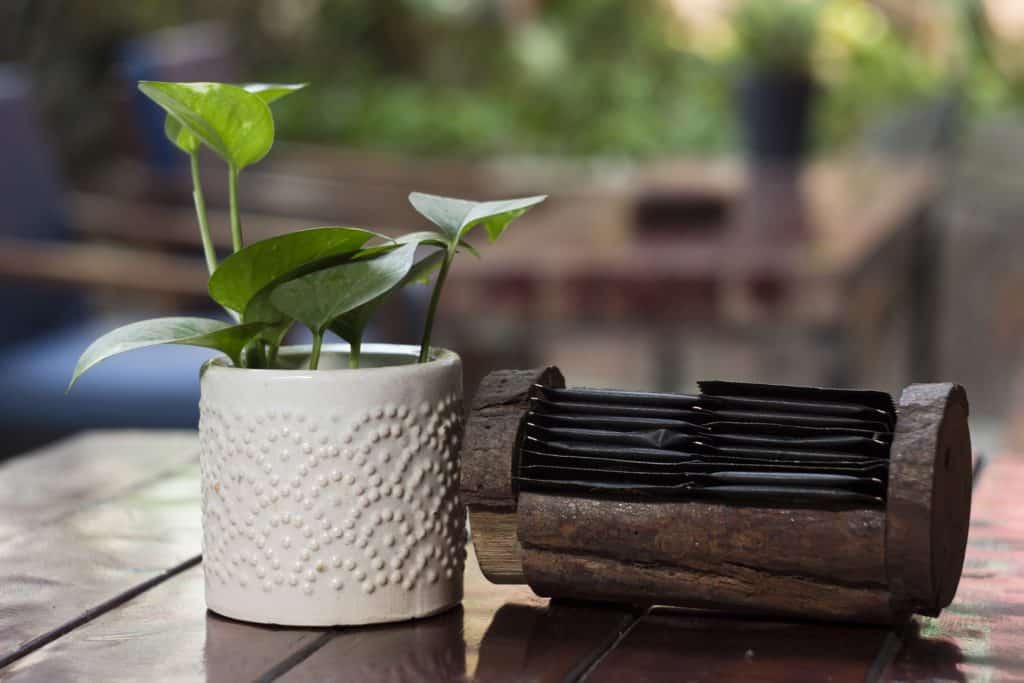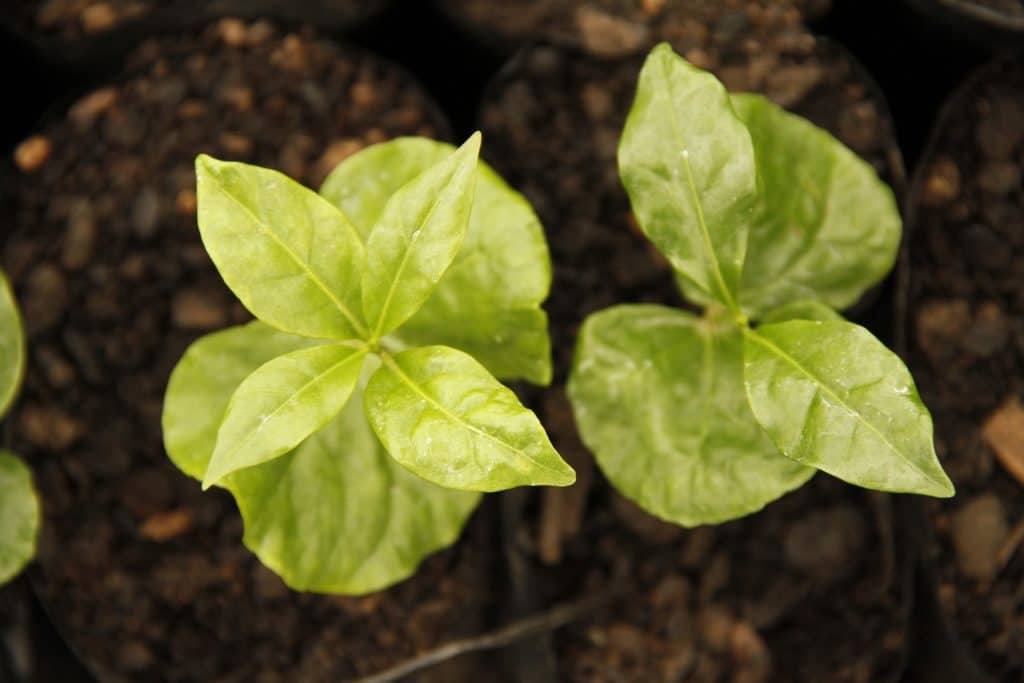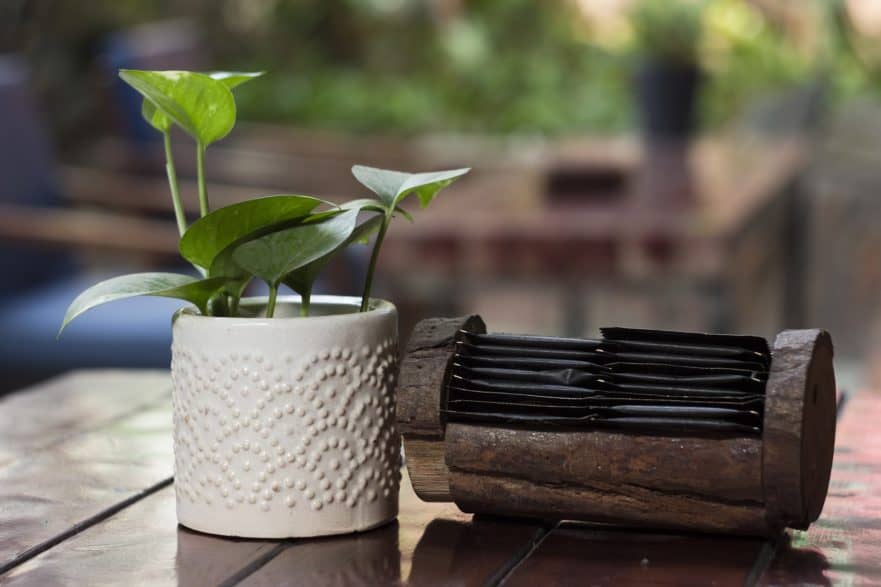
Coffee leaf tea comes from the washed leaves of the coffee plant and has less caffeine then green tea. It tastes full, earthy and lightly sweet on its own and has no coffee flavor.
We are all familiar with the coffee bean, which comes from the fruit of the coffee plant, called the cherry. The coffee bean cherry is not to be mistaken as the stone fruit cherry atop a sundae.
We know that there are different ways to roast a coffee bean before we grind it and brew it to make a perfect cup of joe. In fact, many people cannot begin to function until they have had at least one cup in the morning. However, did you know that you can use the leaves of the coffee plant as well?
How Coffee Leaf Tea Got Started
As early as the 16th century, people all over the world have made use of the coffee leaf for various reasons. Some cultures used coffee beans only for special occasions, such as in Ethiopia. In 19th century Indonesia, plantation workers were not allowed to use the coffee beans they harvested but could use the leaves to brew their own special drinks.
For reasons such as these, many cultures were pleased to brew coffee leaves for drinks. Sometimes coffee leaf tea was served in coconut shells, mixed with ginger or sugar, and various other combinations that were common in the locales the coffee plant was grown.
In years past, coffee leaf tea didn’t gain popularity in western culture. More recently, however, as consumers look to food and drinks with more health benefits, coffee leaf tea has started to make waves.
Additionally, worldwide people are looking to sustainability as an important factor in production of goods. Utilizing the coffee leaf causes the coffee industry to become much more sustainable as the coffee bean harvest only occurs for about three months out of the year. Coffee leaves can be produced all year.
How is Coffee Leaf Tea Made?

The leaves are picked, dried, and then toasted. Coffee leaf tea is made by boiling the coffee leaves in hot water for at least 30 minutes. Another option is to smoke or roast the leaves. Often, coffee leaves are steeped and then mixed with sugar or sweetener. It blends well with other flavors from spices and herbs and even botanicals, similarly to tea.
Whether you buy leaves or grow your own, making coffee leaf tea at home is similar to brewing loose leaf teas. The main difference is that coffee leaves steep longer. Feel free to add extra ingredients, such as rose buds, candied fruits, and vanilla to create blends that appeal to your flavor palate.
What Does Coffee Leaf Tea Taste Like?
Some think it tastes like green tea, full of flavor, but with more of a nutty taste. The place of origin can greatly affect the flavor. Its flavor remains true even when steeped for a long time, not taking on the bitterness that some teas do. The natural flavor of coffee leaf tea combines well with other types of drinks.
Many of the same options that are used with various types of teas also work well with coffee leaf tea. Try adding some dried apple, vanilla and a cinnamon stick for a wonderfully autumnal flavor. For an Asian-inspired selection, add dried lemongrass, mint and ginger.
Hibiscus, mint and lemongrass added to coffee leaf tea and served cold in the summer will certainly turn out refreshing. For a traditional Chai, add milk to a combination of ginger, peppercorns, cloves, cardamom and cinnamon.
What are the Benefits of Drinking Coffee Leaf Tea?
High in antioxidants, coffee leaf tea is a healthier drink alternative because of the high amount of the phytochemical mangiferin and antioxidants present in the leaves. It is considered to have more anti-inflammatory properties than green tea, which is great news for millions of people that suffer from various inflammation-related health conditions.
Coffee leaf tea also contains properties shown to lower cholesterol levels as well as help to lower risk of developing diabetes.
Many people find coffee leaf tea to be very stimulating, like coffee, but also more refreshing, like water. It can be a good bridge between highly caffeinated coffee and non-caffeinated herbal tea.
Coffee leaf tea is becoming more popular among producers because it can be harvested in the off-season. Making coffee plants more diversified in this way makes it a sustainable crop, meaning it is better for the environment, and therefore, us.
How Popular is Coffee Leaf Tea now and in the future…
The popularity of coffee leaf tea has been coming up with more people interested in the health benefits it provides. Although coffee leaf tea has been common in some cultures for centuries, it hasn’t been common worldwide.
The European Union recently approved it for sale, however, which should equal growth on a much larger scale. That is, once people come to understand what, exactly, coffee leaf tea is or isn’t – being neither coffee, nor tea.
As people have become more adventurous and curious with specialty coffee and tea drinks, it is likely that those same people will be willing to try coffee leaf tea.
Coffee leaf tea is so low in caffeine that for many people it would possibly suffice as an alternative to water when they want something with a bit more flavor.
Additionally, for consumers that are concerned about the environment, the sustainability of the coffee leaf tea would be an added benefit. With health benefits, sustainability, and a new choice in specialty beverages, it is likely that the coffee leaf tea industry could very well take off in the years to come. What an exciting prospect it is to be on the forefront of an up-and-coming idea that is grounded in old world culture!

